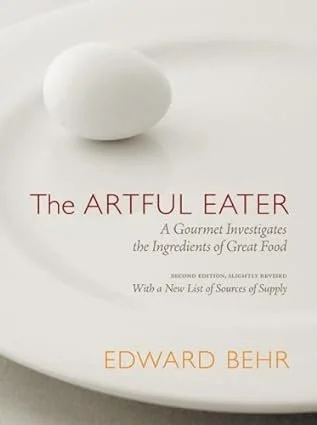One measure of a society is the quality of its diet. By this measure, Western Civilization has declined over the past quarter century despite steadily improving access to quality foodstuffs from producers both at home and abroad. The demise of home cookery and the spread of fast food eateries is largely to blame.
Edward Behr of upstate Vermont has been a constant and informed observer of the gustatory experience during this time, penning an opinionated, in-depth quarterly journal called "The Art of Eating," in which he writes about the best foods and wines — what they are, how they are produced, and where to find them.
"I began to write about food in the mid-80s, when it was still possible to feel close to the back-to-the-land movement," Behr explains in the preface to the slightly revised second edition of his collection of erudite essays, The Artful Eater: A Gourmet Investigates the Ingredients of Great Food. "Today, we are more estranged from traditional skills and rural life -- from nature and the way food is produced. Yet very happily because of the vogue for good food and the huge success and proliferation of farmers' markets, more Americans know and care about food."
Behr perceives a new-found respect for talented chefs and a burgeoning interest in food production among country newcomers -- many of them hobby farmers with deep pockets -- obsessed with quality. These are hopeful signs for picky eaters, and Behr is a picky eater.
In his essays, both those that appear in his journal and those collected in his book, Behr carefully examines a single food type, such as coffee or apples, carrots or pork. He examines both how the ingredient is grown, raised, or produced and how it is processed, packaged and used by the consumer. His prime interest in all this is the food's quality, but not in the terms of safety and nutrition that "food quality" is generally referred.
"To my mind the essence of good food is flavor -- not health, certainly not speed of preparation or practicality," he explains. In the pursuit of food quality and bargain pricing, the quality of a food can easily be lost.
Behr's observations are a welcome reminder, especially in these days of nutritional nazism and extreme dieting, that both the preparation and appreciation of great food are sadly neglected art forms. Their demise parallels a rise in tastelessness.
Behr's tastes have changed little since "The Artful Eater" was first published in 1992, but the ingredients he writes about have, and a few of his observations are as follows:
> A noticeable decline in the taste of farmed salmon and a greater appreciation for wild Pacific salmon.
> The deterioration in the quality of mass-produced pork and beef is a "great disgrace," and "most of the interest had already been taken from chicken."
> Supermarket apples are still not worth buying.
> Superlative fresh cream remains scarce.
> More good farm-made cheeses are now available across the country.
> The popularity of gourmet coffee chains has diluted the supply of excellent green coffee beans so much that it's very hard to find a high quality roast. Starbucks "is now wholly mass-market and of no interest."
> More delicious heirloom tomatoes are available as "part of the huge increase in the amount of top-quality fresh produce grown around the country and sold especially at farmers' markets.
> More small farms are producing "very delicious meats of many kinds, including well-marbled pork and beef, some from superior breeds outside the mainstream.
